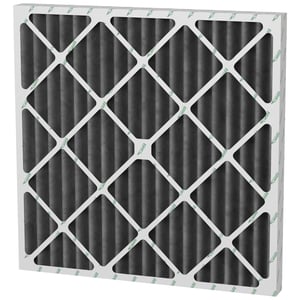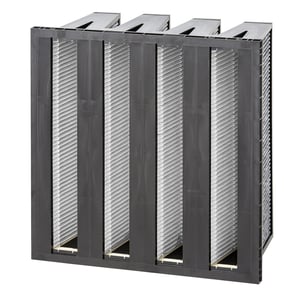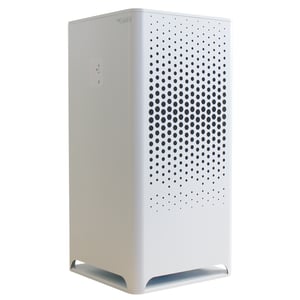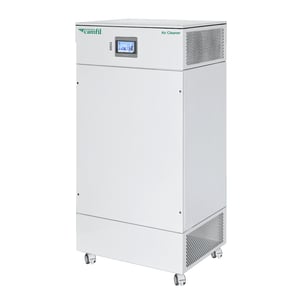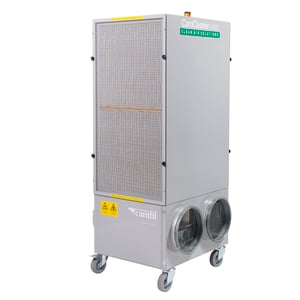Almost every year, South East Asia is looming in the shadow of haze, signaling the return of forest fires caused by peatlands burning. The smoke produced by such fires contains microscopic particles less than 2.5 microns in size, known as PM2.5 and PM1. Forest fires also release gaseous hydrocarbons and nitrogen oxides that forms ground level ozone. All these pollutants released into the air have a long-lasting impact on air quality and our health. So how can you remove the haze in your indoor environment?
The pollutants found in forest fire smoke can cause a range of health problems, from temporary burning eyes, runny nose to aggravated heart and lung conditions. The biggest health threat from smoke comes from the microscopic particles, known as particulate matter (PM). These particles are fine enough to penetrate deep into the lungs and enter the blood stream. Long-term exposure to PM1 particles has been linked to cancer, as well as diseases of the liver, kidneys and the nervous system.
The composition of haze
The basic components of haze particles are chemical substances, including ozone, sulfur dioxide, nitric oxide, nitrogen dioxide, carbon monoxide, carbon dioxide, volatile organic compounds, metals, nitric acid, nitrates, sulfuric acid, sulfates, organic carbon, etc. These chemical substances have adverse effects on human health because they have different physical and chemical properties.Therefore it is critical to stop particle matter (PM) from invading our indoor spaces, where people spend around 90% of their lives. If outdoor air is not effectively filtered and cleaned, there is a risk that the indoor air will contain a very large quantity of the harmful particulates that find their way into people’s respiratory tracts and circulation systems. These particles and other substances can combine with those already present inside buildings and become more aggressive and harmful, making indoor air pollution many more times as hazardous as the outdoor variety.
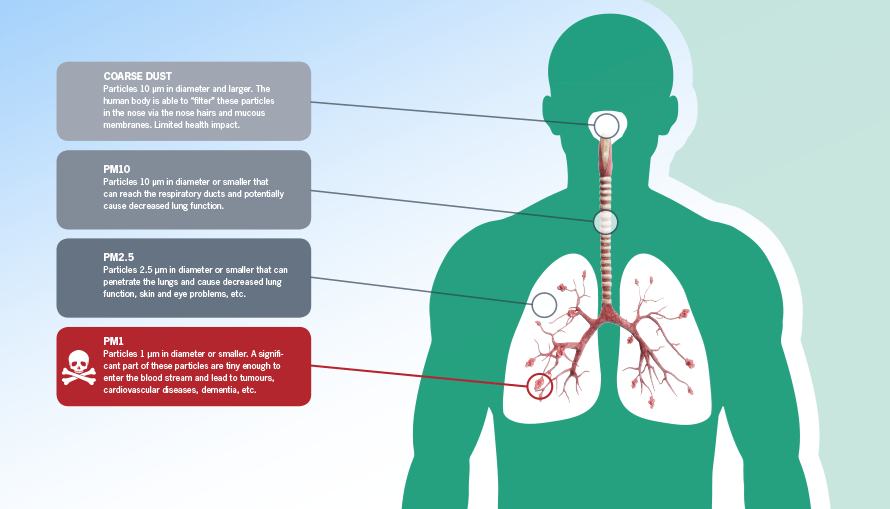
What can we do?
Wild fire smoke drawn into a building through an HVAC ventilation system lacking proper filtration can be spread these health risks throughout the facility. In hospitals, outpatient or residential care, Patient and visitors are specially vulnerable to these contaminants. Odor from smoke can linger and cause a drop-off in learning and productivity of schools and commercial buildings. Sensitive equipment and products being manufactured such as Microelectronics parts or food and beverages can be damaged or destroyed.
Our target to mitigate the risks of wild fires smoke is to utilize a combination of carbon filtration and air filters on PM2.5/PM1 particles.
Haze Free Air Filters: It is recommended to use 2 in 1 air filters in AHU (air handling unit) for air conditioned buildings to remove PM1/ PM 2.5 particles as well as VOCs during haze period. These filters are tested and classified in accordance to the ISO 16890 standard for particulate removal efficiency and ISO 10121-3 for molecular air gases removal efficiency.
The focus should be put on filtering particles that are 1μm (micrometre) or smaller in diameter – particles also known as PM1 (Particulate Matter 1) to achieve healthy indoor air quality.

Things to consider before investing in air filtration solutions for commercial buildings:-
Air Cleaners: In non airconditioned places or where air filters in AHU can’t be upgraded due to limited space, we recommend to use air cleaners with at least 2 stages of filters. e.g. Molecular filters according to ISO 10121-3 and HEPA14 (MPPS) according to EN1822 standard.
Following points to be considered before buying Air Cleaners:-
1. Clean air delivery rate (CADR) for removal of cigarette smoke (diameter 0.1 – 1.0 µm)
2. Ozone emission (valid for electronic technology air cleaners), its advisable to consider mechanical filtration product
3. Noise level
4. Energy efficient motor like EC motor
5. Minimum 2 stages filters; molecular filter to remove VOCs/ Ozone and HEPA14 (@MPPS) to remove ultrafine particles
How can we help?
Air Filters are like workhorses in ventilation systems and current ISO ePM1 60% filters have varying efficiencies to capture PM1 (typically 50-75%).
With filters significantly influencing indoor air quality (IAQ), it will be increasingly important to choose the right filter and efficiency for the targeted particulate matter. This is not easy today because current regional standards apply different filter testing and classification methods, preventing proper product comparisons. Current standards are also known to have limitations and generate results that are sometimes far from filter performance in service.
Camfil air filters are available today to meet the stricter demands for removing PM1/PM2.5 and molecular filter tested according to global ISO standard.
Your nearest Camfil representative will also be glad to advise you on the right filters for your building and location.
We also offer air cleaners for industrial and commercial use. All the air cleaners come with air filters to remove VOCs, Ozone and Ultrafine particles. We offer HEPA14 filters according to EN1822 standard and VOC filter according to ISO 10121-3 standard, EC motor to reduce energy consumption, lower noise levels and up to one year of filter life time.
For more information on selecting air filters to address problems with haze, please contact us.
